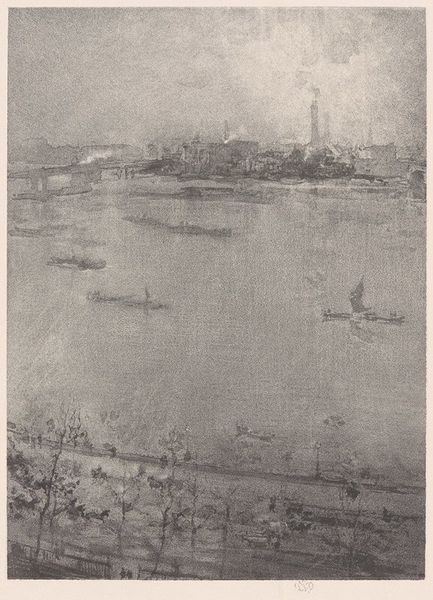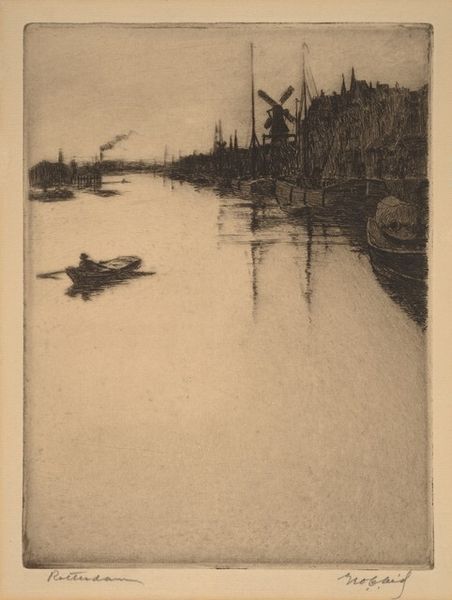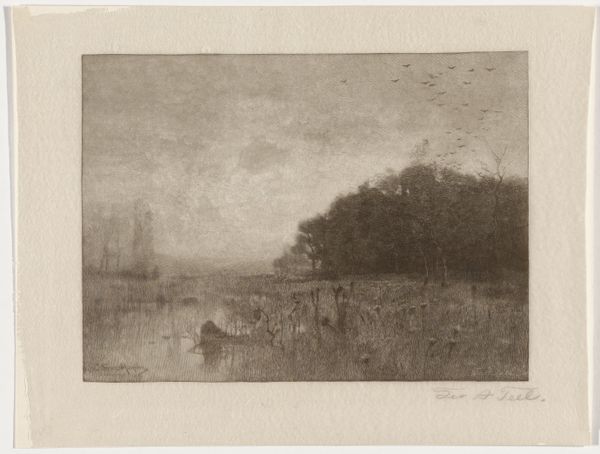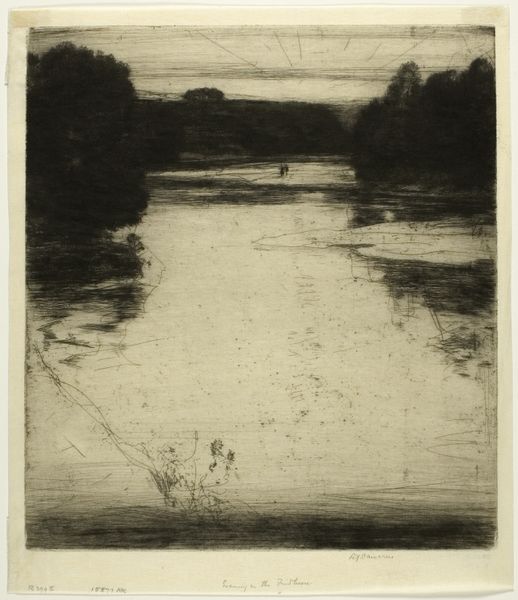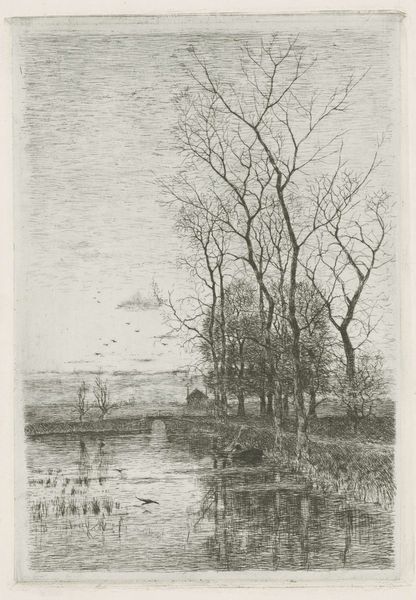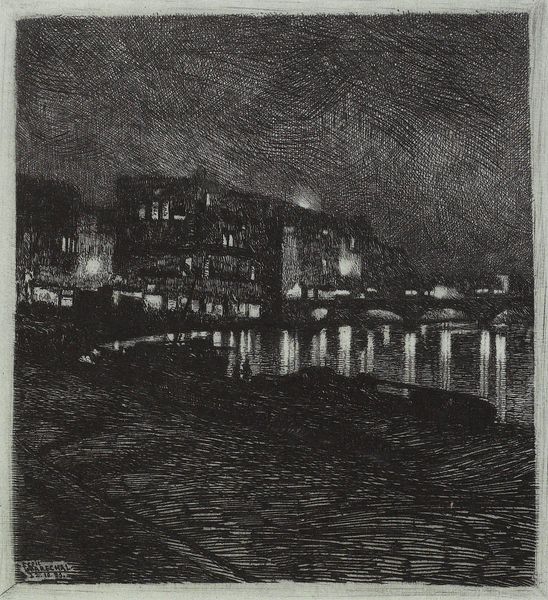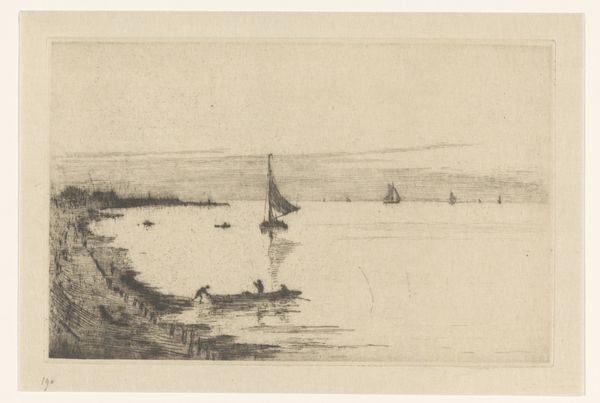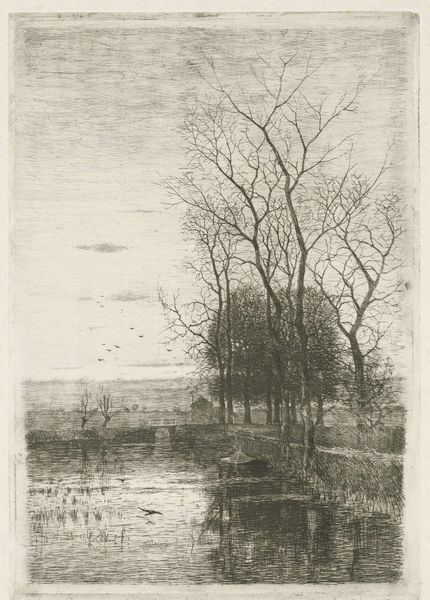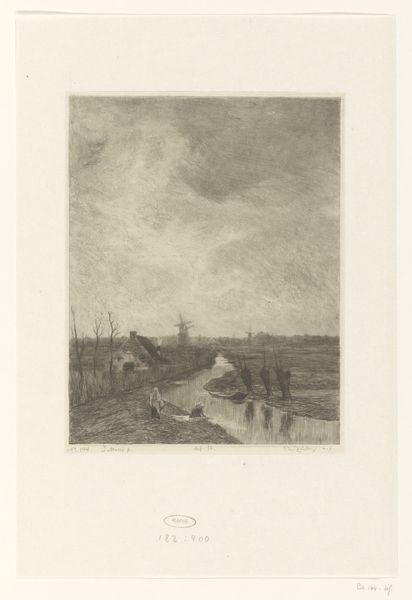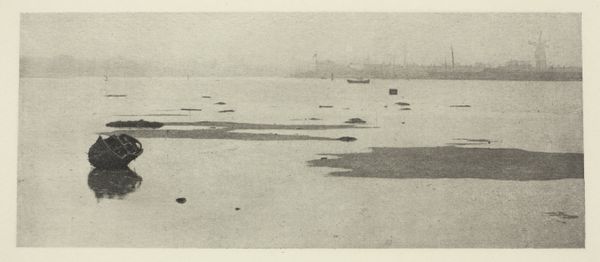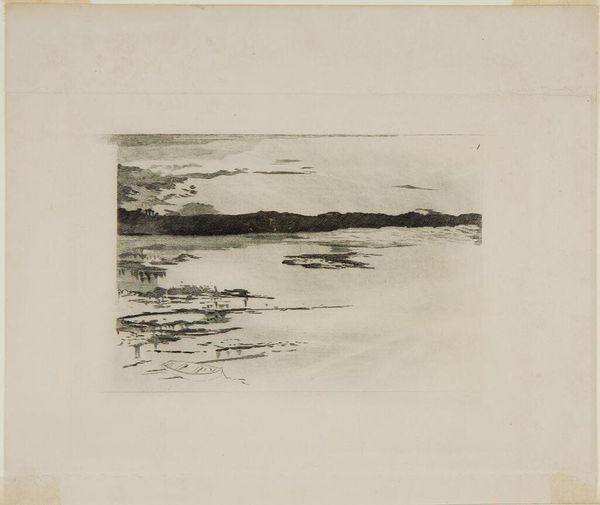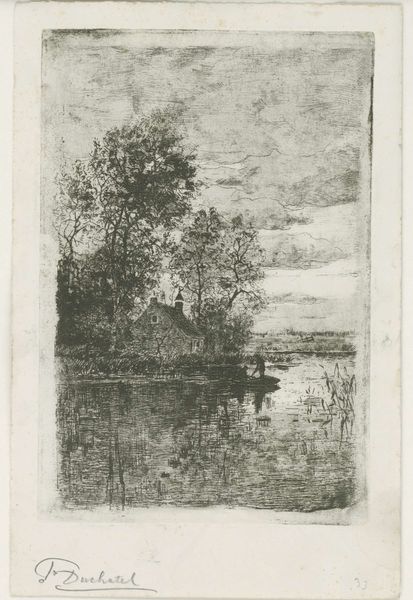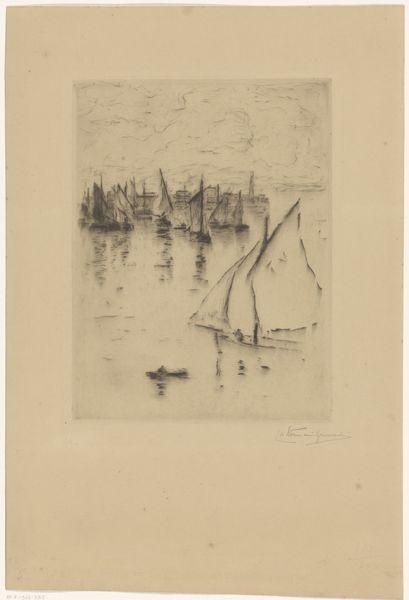
Dimensions: height 265 mm, width 195 mm
Copyright: Rijks Museum: Open Domain
James McNeill Whistler created this etching of *The Thames*, using a metal plate, acid, and ink. The image shows a somewhat dystopian view of London's river, with factories belching smoke into the air. The magic of etching lies in its controlled violence. Whistler would have coated the metal plate with a waxy, acid-resistant ground. Then, using a sharp needle, he scratched away the ground, exposing the metal underneath. The plate was then submerged in acid, which bit into the exposed lines, creating grooves. Ink was applied to the plate, filling these grooves, and the surface wiped clean. Finally, the image was transferred to paper under great pressure. The atmospheric quality of the print depends entirely on the artist’s control of this process. Note how Whistler’s skillful manipulation of tone captures the heavy, industrialized atmosphere. By embracing printmaking, Whistler engaged with the wider social issues of labor and industrial production. This challenges the traditional hierarchy between fine art and craft, emphasizing the skill and artistry involved in processes of making.
Comments
No comments
Be the first to comment and join the conversation on the ultimate creative platform.
